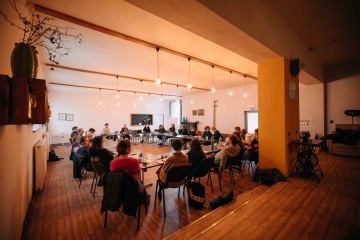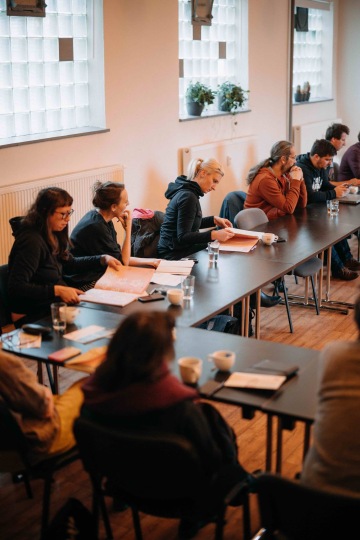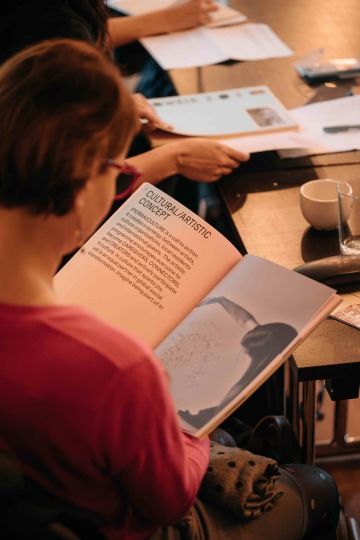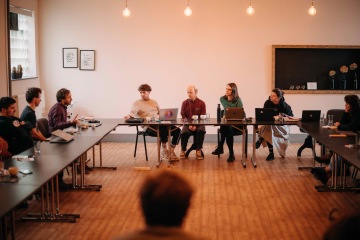The Culture Island and 28 HOUSES projects connect cultural houses in the city and the region
Both the Culture Island and 28 HOUSES projects are based on the cooperation of cultural organisations that have their own space for the presentation of cultural activities. At the beginning of November we organized two meetings for cultural actors who will create these two platforms together. What are they to be used for? What do the platforms have in common and how do they differ? Who all is part of them?
Culture Island - new cultural district in Budějovice
CULTURE ISLAND is a newly emerging cultural district located at the confluence of two rivers in the centre of České Budějovice. Our aim is to highlight the potential that is found in this part of the city. In the future, this newly emerging cultural quarter will become a clear destination for all those who are attracted by culture. Both local and foreign visitors. How can this common platform work? We recommend exploring, for example, the MuseumQuartier in Vienna, which is one of our many inspirations.
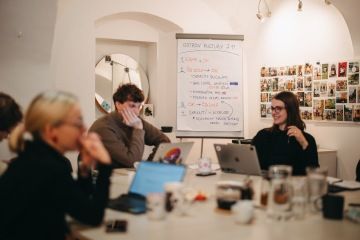
Who is part of the Culture Island?
The meeting was attended by representatives of the South Bohemian Theatre, DK Metropol, the Háječek Summer Cinema, the future Slavia Cultural and Creative Centre and the Rabenštejn Tower. During the three-hour meeting, which was also attended by the Deputy Minister for Culture Zuzana Kudláčková, we focused on setting up the format of cooperation between the organisations, a joint project to get to know the audience better and planning joint cultural and artistic activities for the general public. The first event when these institutions will join forces is the celebration of the 760th anniversary of the town's foundation in 2025.
Other members of the cultural quarter are the Alš South Bohemian Gallery, the South Bohemian Museum, the South Bohemian Philharmonic, the South Bohemian Scientific Library and the Planetarium. Martin Kolář is the coordinator of the creation of the Island of Culture plartform, who has been working on this agenda during the preparation of the current cultural strategy of the city of ČB. Once this platform is set up, the project should be open to other interested parties whose cultural activities touch the site of the cultural quarter, which will be located around the confluence of the Malše and Vltava rivers.
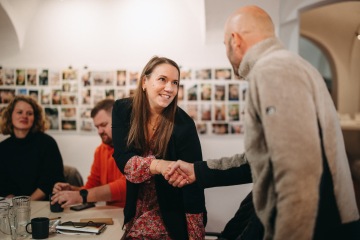
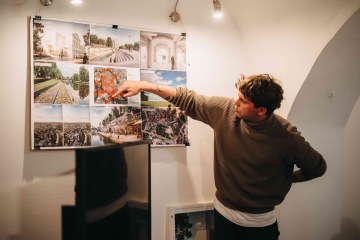
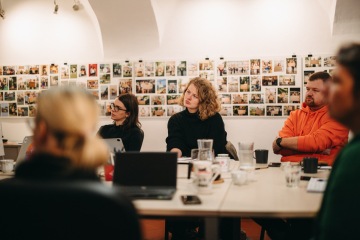
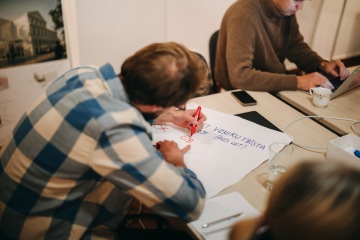

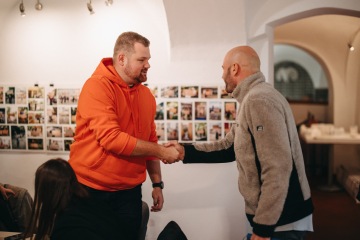
28 HOUSES
A meeting of cultural organisations interested in becoming members of the network of South Bohemian cultural centres 28 HOMES took place on 10 November, which is supposed to be a mediator for the implementation of the activities of the European Capital of Culture in the South Bohemian region. The meeting was attended by 18 organisations based across the region. We covered all ethnographic regions: the Blato, Doudlebsko, Kozácko, Pošumaví and Prácheňsko.
Representatives of the Cultural Plantation Blatná came from the western part of South Bohemia, representatives of MěkS Vimperk and MěkS Volyně came from Sumava, Strakonice was represented by Ostrov 1415, Prachatice by Živá Vila, and representatives of the unique children's gallery Sladovna came from Písek. Týn nad Vltavou was represented by the Municipal Gallery, and from Vodňany came to greet the MěKS Vodňany (which celebrated its 50th anniversary that day). Tábor had the biggest representation through the Jednota Tábor, the Municipal Library, the Oskar Nedbal Theatre and the Cesta Tábor, and from the border of the Central Bohemia region came the Naplaveno organisation from Jistebnice. The eastern part of South Bohemia was also represented thanks to the young and progressive organization Třeboň 105, the unique Kraffer Gardens in Jindřichův Hradec, and from the Moravian part of the South Bohemian Region came the Slavonian Spolkový dům. Unique village projects such as Rezi.dance from Komařice and Plum Court from Malovice were also represented.
During the three-hour talk, the organizations presented their plans for the next few years, reviewed the contribution of Kul.turist in the region during the ECC candidacy and brought together organizations that often did not know about each other before. We discussed the activities that the European Capital of Culture can bring and help organisations to improve their cooperation with local communities. In addition to encouraging further cooperation between organisations, in 2024, the aim of CB28 will be to support them to connect with international partners and advocate for their great cultural activities and activities with the political representatives of the municipalities where they are based, who often don't even know the cultural treasure in these organisations and the people who run them.
